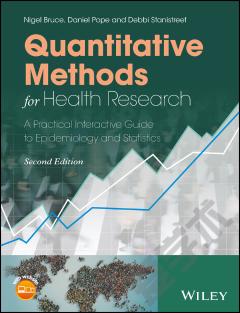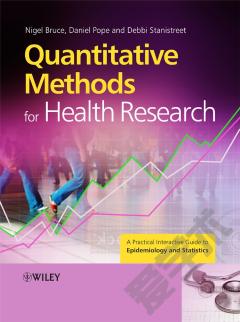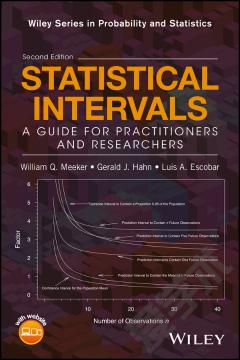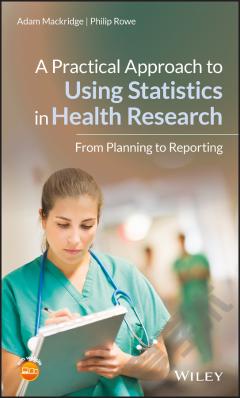Quantitative Methods for Health Research —— A Practical Interactive Guide to Epidemiology and Statistics
----- 卫生研究定量方法:实际流行病学和统计学的互动指南,第二版
Preface. 1 Philosophy of science and introduction to epidemiology. Introduction and learning objectives. 1.1 Approaches to scientific research. 1.2 Formulating a research question. 1.3 Rates: incidence and prevalence. 1.4 Concepts of prevention. 1.5 Answers to self-assessment exercises. 2 Routine data sources and descriptive epidemiology. Introduction and learning objectives. 2.1 Routine collection of health information. 2.2 Descriptive epidemiology. 2.3 Information on the environment. 2.4 Displaying, describing and presenting data. 2.5 Summary of routinely available data. 2.6 Descriptive epidemiology in action. 2.7 Overview of epidemiological study designs. 2.8 Answers to self-assessment exercises. 3 Standardisation. Introduction and learning objectives. 3.1 Health inequalities in Merseyside. 3.2 Indirect standardisation: calculation of the standardised mortality ratio (SMR). 3.3 Direct standardisation. 3.4 Standardisation for factors other than age. 3.5 Answers to self-assessment exercises. 4 Surveys. Introduction and learning objectives. 4.1 Purpose and context. 4.2 Sampling methods. 4.3 The sampling frame. 4.4 Sampling error, confidence intervals and sample size. 4.5 Response 4.6 Measurement. 4.7 Data types and presentation. 4.8 Answers to self-assessment exercises. 5 Cohort studies. Introduction and learning objectives. 5.1 Why do a cohort study? 5.2 Obtaining the sample. 5.3 Measurement. 5.4 Follow-up. 5.5 Basic presentation and analysis of results. 5.6 How large should a cohort study be? 5.7 Confounding. 5.8 Simple linear regression. 5.9 Introduction to multiple linear regression. 5.10 Answers to self-assessment exercises. 6 Case-control studies. Introduction and learning objectives. 6.1 Why do a case-control study? 6.2 Key elements of study design. 6.3 Basic unmatched and matched analysis. 6.4 Sample size for a case-control study. 6.5 Confounding and logistic regression. 6.6 Answers to self-assessment exercises. 7 Intervention studies. Introduction and learning objectives. 7.1 Why do an intervention study? 7.2 Key elements of intervention study design. 7.3 The analysis of intervention studies. 7.4 Testing more complex interventions. 7.5 How big should the trial be? 7.6 Further aspects of intervention study design and analysis. 7.7 Answers to self-assessment exercises. 8 Life tables, survival analysis and Cox regression. Introduction and learning objectives. 8.1 Survival analysis. 8.2 Cox regression. 8.3 Current life tables. 8.4 Answers to self-assessment exercises. 9 Systematic reviews and meta-analysis. Introduction and learning objectives. 9.1 The why and how of systematic reviews. 9.2 The methodology of meta-analysis. 9.3 Systematic reviews and meta-analyses of observational studies. 9.4 The Cochrane Collaboration. 9.5 Answers to self-assessment exercises. 10 Prevention strategies and evaluation of screening. Introduction and learning objectives. 10.1 Concepts of risk. 10.2 Strategies of prevention. 10.3 Evaluation of screening programmes. 10.4 Cohort and period effects. 10.5 Answers to self-assessment exercises. 11 Probability distributions, hypothesis testing and Bayesian methods. Introduction and learning objectives. 11.1 Probability distributions. 11.2 Data that do not 'fit' a probability distribution. 11.3 Hypothesis testing. 11.4 Choosing an appropriate hypothesis test. 11.5 Bayesian methods. 11.6 Answers to self-assessment exercises. References. Index.
{{comment.content}}








 京公网安备 11010802027623号
京公网安备 11010802027623号